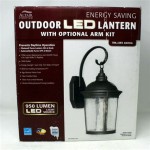```html
Light For Outdoor Photography: A Comprehensive Guide
Outdoor photography hinges significantly on understanding and manipulating light. Unlike studio environments where artificial light sources are controlled meticulously, outdoor photography requires adaptability and a keen awareness of ambient light conditions. The sun, the primary light source, offers a constantly changing spectrum of possibilities, demanding that photographers understand its behavior and how it interacts with the environment.
Mastering outdoor light extends beyond simply knowing how to operate a camera. It involves observing how light impacts color, texture, and mood within a scene. This knowledge allows photographers to anticipate optimal shooting times, leverage natural reflectors, and make informed decisions about composition and exposure to capture compelling images.
Understanding the Quality of Light
The quality of light refers to its hardness or softness, which dramatically affects the appearance of a subject. Hard light, characteristic of midday sun, produces strong shadows and high contrast. It emphasizes textures and can create a sense of drama, but it also tends to be less flattering for portraits due to harsh shadows on the face.
Soft light, on the other hand, is diffused and gentle, minimizing shadows and reducing contrast. This type of light is often found during the "golden hours" (shortly after sunrise and before sunset) and on overcast days. Soft light is generally considered more flattering for portraiture and is also excellent for capturing detail in landscapes.
The transition between hard and soft light is gradual, and photographers can manipulate light quality to some degree. Using reflectors to bounce light into shadow areas softens the contrast. Similarly, positioning a subject in open shade can provide a more even illumination than direct sunlight.
Consider the aesthetic you want to achieve. High-contrast images created with hard light can be visually striking, while softer light can create a more peaceful and delicate mood. Understanding these differences is crucial to making creative choices.
Harnessing the Golden and Blue Hours
The golden hours, the period shortly after sunrise and before sunset, are renowned for their warm, golden light. During these times, the sun is low on the horizon, and the light travels through more of the atmosphere, scattering blue light and leaving a higher proportion of warmer tones. This results in a rich, saturated light that enhances colors and adds a warm glow to landscapes and portraits.
The blue hour, occurring just before sunrise and after sunset, offers a different kind of magic. The sun is below the horizon, but its indirect illumination casts a soft, cool, blue-tinged light across the landscape. This time is excellent for capturing cityscapes, seascapes, and scenes with architectural elements, as the uniform light minimizes harsh shadows and allows for long exposures to capture motion blur.
Planning is essential for maximizing these hours. Checking sunrise and sunset times for your location is crucial. Scouting locations beforehand allows you to identify ideal vantage points and anticipate how the light will interact with the landscape. Arriving early ensures you're ready to capture the best light as it unfolds.
Experiment with white balance settings during these hours to fine-tune the color temperature of your images. Auto white balance is a good starting point, but adjusting it manually allows you to enhance the warmth of the golden hour or the coolness of the blue hour.
Utilizing Natural Reflectors and Diffusers
While the sun is the primary light source, natural elements can act as reflectors and diffusers, modifying the available light and providing greater control over your images. Understanding how these elements work can significantly improve your outdoor photography.
Water surfaces, such as lakes, rivers, and oceans, can act as large reflectors, bouncing light back onto your subject and filling in shadows. This can be particularly useful in portraiture to brighten faces and reduce harsh shadows. Similarly, light-colored surfaces, such as sand or snow, can also act as reflectors, albeit with varying degrees of intensity.
Trees, clouds, and even buildings can act as natural diffusers, softening the harshness of direct sunlight. Overcast days provide a naturally diffused light, ideal for capturing details and textures. Positioning a subject in open shade under a tree can also provide softer, more even illumination than direct sunlight.
Observe how light interacts with the environment around you. Pay attention to the direction and intensity of light reflecting off different surfaces. By positioning your subject strategically, you can leverage these natural reflectors and diffusers to achieve the desired lighting effect.
Using a portable reflector can augment these natural elements, allowing for more precise control over light direction and intensity. Reflectors come in various colors and sizes, each offering a different quality of reflected light. Gold reflectors add warmth, while silver reflectors provide a brighter, more neutral reflection.
Dealing with Overcast Conditions
Overcast days often present a seemingly dull and uninspiring light. However, these conditions actually offer unique opportunities for outdoor photography. The diffused light minimizes shadows and reduces contrast, allowing for the capture of subtle details and textures that are often lost in direct sunlight.
The soft, even illumination of overcast days is particularly well-suited for portraiture. The lack of harsh shadows creates a more flattering and natural look. Similarly, overcast conditions are ideal for photographing landscapes, as they reveal details in the shadows and prevent highlights from being blown out.
Embrace the mood of the overcast day. Instead of trying to force bright, sunny images, focus on capturing the atmosphere. Use a wider aperture to blur the background and emphasize the subject. Consider converting your images to black and white to enhance the moodiness and drama.
Look for pockets of light that might break through the clouds. These moments can create dramatic effects and add interest to your images. Be patient and observant, and you may be rewarded with unexpected opportunities.
Working with Harsh Midday Light
Midday sun, often considered the enemy of outdoor photographers, presents a challenge due to its harsh shadows and high contrast. However, with the right techniques and mindset, it is possible to capture compelling images even under these conditions.
Look for open shade. Positioning your subject under a tree, building, or other structure can provide a more even and flattering light than direct sunlight. Open shade allows for softer light while still retaining some degree of ambient brightness.
Use a fill flash. A fill flash can be used to brighten shadows and reduce the overall contrast of the scene. Adjust the flash power carefully to avoid overpowering the natural light and creating an unnatural look.
Consider shooting in black and white. Converting images to black and white can often mitigate the harshness of midday light and emphasize textures and shapes. Black and white photography can also add a timeless and dramatic feel to your images.
Embrace the high contrast. Sometimes, the strong shadows and high contrast of midday light can be used to create striking images. Focus on capturing silhouettes or using the shadows to create graphic patterns.
Utilize polarizing filters. Polarizing filters reduce glare and reflections, which can be particularly useful when shooting around water or other reflective surfaces. They can also increase the saturation of colors and deepen the blue of the sky.
Wait for a break in the clouds. Even during midday, clouds can occasionally pass in front of the sun, providing a brief period of softer, more diffused light. Be ready to take advantage of these opportunities when they arise.
The Importance of Composition in Variable Light
Composition and light work intimately together. While strong light can make a weak composition passable, strong composition accentuates any light, good or bad, available. Thinking about how light falls on the elements you intend to compose is essential for compelling outdoor photography.
Leading lines can be used to guide the viewer's eye through the image and towards the subject. The way light interacts with these lines can either strengthen or weaken their effect. For example, a sunlit pathway leading towards a shaded forest can create a sense of depth and intrigue.
Framing, using elements in the foreground to surround the subject, can also be used to direct attention and add depth. The light on the framing elements can create a sense of context and further enhance the composition.
Consider the rule of thirds, a compositional guideline that suggests dividing the image into nine equal parts and placing key elements along the lines or at the intersections. The way light falls on these key elements can emphasize their importance and create a more balanced composition.
Experiment with different angles and perspectives to see how the light changes the appearance of the scene. A low angle can emphasize the scale of a landscape, while a high angle can provide a broader view. The position of the sun relative to the camera will also affect the shadows and highlights in the image.
By carefully considering the relationship between composition and light, you can create images that are both visually appealing and emotionally resonant.
```
Help The Sun Using Artificial Light In Outdoor Photography Learn By Zoner Photo Studio

The Best Lighting For Outdoor Photography Focus

Using Lights For Outdoor Night Time Portrait Photography

Applying The 3 Light Studio Setup To Outdoor Portraits

Allison Shelby Lighting Work Setup Dramatic Photography Photo Light

Off Flash Vs Natural Light Which Is Best For Outdoor Portraits Shutterbug

How To Mix Ambient Light And Fill Flash For Outdoor Portraits

11 Outdoor Portrait Photography Tips For Easy Shots

Complete Guide To Outdoor Light In Photography Photographer

Outdoor Natural Light Photography Tips Portrait Shoot Overlight
Related Posts







